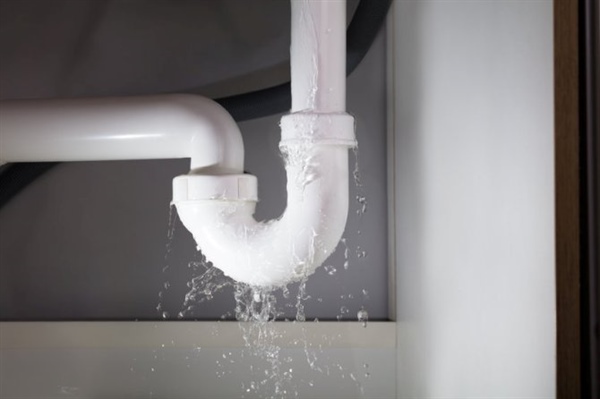What to Do After a Pipe Bursts in Your Home

One of the worst disasters homeowners can face is a burst pipe. When a pipe bursts, there's never any warning. Suddenly, you're faced with a serious mess and, often, significant water damage to your home and belongings.
Fortunately, Restoration Network is here to help you get back on track fast when a burst pipe sends your home into chaos. This post covers everything you need to know to prevent and handle a burst pipe in your home. To get professional water damage restoration services when you need them, give our general contractors a call.
What Causes a Burst Pipe?
Although a burst pipe can seem to come out of nowhere, the factors that lead to a burst pipe can gradually build up over time. These are the most common reasons for a burst pipe:
Frozen Pipes
Minnesota winters can be notoriously cold, and if your pipes aren't properly insulated, or your home gets too cold, the cold can cause pipes to freeze. Anytime the water in your pipes freezes, you're at risk of a burst pipe. To prevent frozen pipes from bursting, keep your home warm and make sure your lines are well-insulated.
Pipes Shifting
When pipes shift or move significantly, it can cause them to burst occasionally. This can occur when the cold weather in winter contracts lines, causing them to shift. Water pressure changes can also impact pipe movement.
Pipe Clogs
Anytime a pipe becomes significantly clogged, water pressure can build up in the system, eventually causing the pipe to leak or even burst.
Corroded Pipes
Rust and corrosion can cause the pipe to degrade and leak. Over time, this damage can lead to it bursting.
Signs a Pipe May Burst
Frequently, some signs show up before the worst happens, and understanding what to look for can sometimes help avert disaster.
Look for these signs that you may have a serious plumbing problem on your hands:
● Unusually low water pressure
● Discolored water indicative of rust in the pipes
● Wall or ceiling stains near a pipe
● Puddles around your bathtub, toilet, or sink
● Outsized water bill
● Shaking pipes
● Clanging pipes
● Metallic water smell
Take These Steps When a Pipe Bursts
When a pipe bursts in your home, you'll want to call a plumber immediately. However, there are a few steps you can take on your own before they arrive:
1. Turn off the water main.
2. Clean the water as soon as possible to avoid water damage.
3. Flush your toilets after turning off the water main.
4. Warm your frozen pipes by turning up your home heat or using a hairdryer to prevent additional breaks.
5. Use a repair sleeve for a temporary fix.
6. Call a professional water removal service.
Tips to Prevent Pipes from Bursting
Pipes can burst at any time of the year, and while it's more typical in the winter months with the freezing temperatures, here are a few steps to keep them protected.
1. Insulate Them
For navigating extreme temperature fluctuations, insulation is one of the best preventative measures. While wrapping them with newspaper can help, investing in specific products that help with freeze protection, like insulation sleeves or heat tape, is best.
Your piping runs through all areas of your home, so as you go through the lines, pay special attention to areas like kitchen cabinets, attics, and crawl spaces.
2. Let Faucets Drip
Once the water in the pipe freezes, this leaves no pathway for excess to get through and can trigger a burst pipe that can flood your entire home! So, if you're dealing with freezing temperatures, we always recommend leaving faucets dripping or running slowly to keep a continuous flow for expansion and contraction in the pipes.
3. Keep Your Thermostat On
While you keep your internal space at a comfortable temperature through the winter, it's also important to maintain it even if you're away. Never set the thermostat below 55 degrees, especially at night, to help your home retain a high enough temperature and prevent frozen pipes.
4. Seal Leaks in the Home
Pockets of cold air flowing into your home are one of the worst things to deal with in winter because they can create much larger issues like burst pipes and ice dams. Check for drafts, and if they are present, invest in high-quality insulation and caulking to seal leaks around your piping because even the tiniest openings can let in enough cold air to freeze the system.
5. Get Regular Inspections
Typically, people only call a plumber once a major emergency happens; however, regular maintenance can reduce the risks. Damage can occur before you realize it, so it's recommended to have your plumbing system inspected every two years to make sure your pipes are in good working condition.
Contact Our Water Damage Restoration Services
Water damage after a burst pipe can quickly lead to mildew and mold growth in your home. Don't take a chance on additional damage! Our team is your Twin Cities full-service specialists, and whether you need storm damage repair or commercial mitigation services, we can help!
Call Restoration Network at 612-564-0202 or connect with our water damage repair pros online to get a quote on water damage restoration services when you need them.